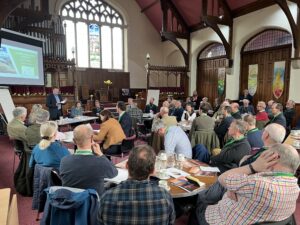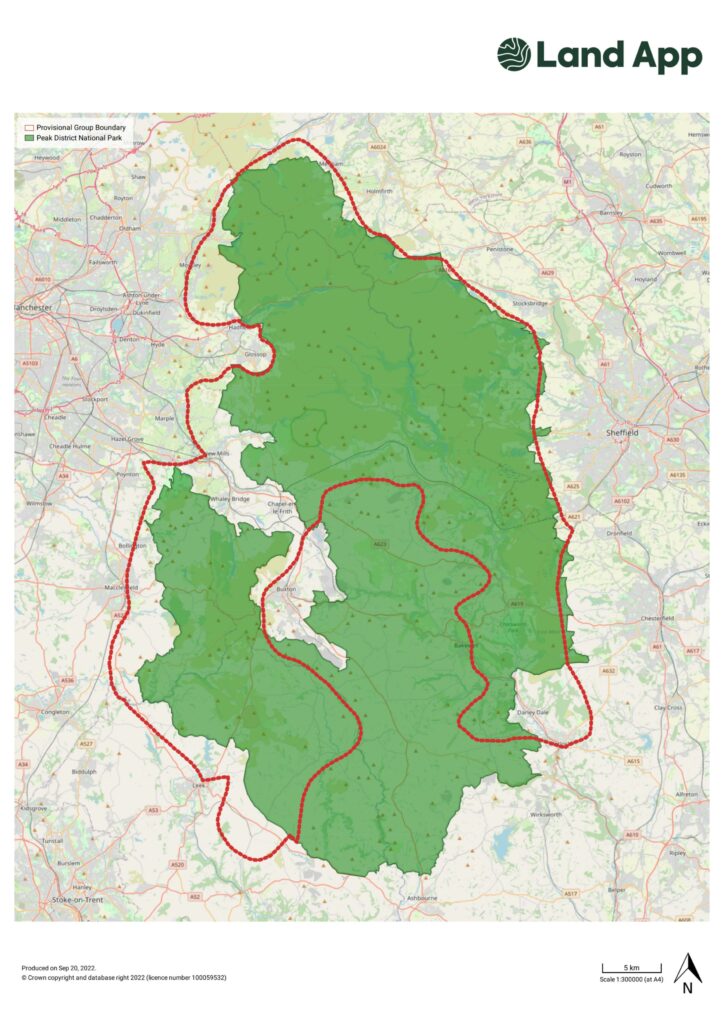The major questions farmers have asked us are set out below. If you don’t find the answer you need, please contact us.
If I’d like express interest in joining PEF, what do I do?
You can fill in our Expression of Interest form here.
How do I get more details on the financial benefits?
Contact us and we’ll answer your question by email or call you back, as you wish.
When did it start?

The idea originated at the Peak District Upland Workshop held 26/27 May 2022, chaired by Rt Hon Lord Benyon, the Defra minister responsible for protected landscapes. A Scoping Group was formed and had its first meeting on Friday 24 June 2022.
Who is on the Scoping Group?
The Peak District Upland Workshop was organised and hosted by the Fitzwilliam Wentworth Estate, the GWCT and the Moorland Association. So representatives of those organisations are on the Scoping Group as well as other local farmers and upland managers.
Currently it comprises Chloe Palmer (Farmer Cluster Facilitator), Teresa Dent (GWCT), Amanda Anderson (Moorland Association), Andrew Critchlow (NFU) and local farmers and moorland managers: Ruth Battye, Dan Richmond-Watson, Geoff Eyre, Jeremy Young, Simon Gurney, Ben Rimington Wilson, Richard Bailey, Sarah Read, Joe Dalton, Robert Helliwell, John Dunning and James Howard.
What is it modelled on? Has this been done before?
It is modelled on the Environmental Farmers Group set up in the Avon catchment in Hampshire and Wiltshire. That group started to work together in May 2021 and launched as a co-operative on 3 May 2022. Over 100 farmers have signed an expression of interest and nearly 60 of them have signed up as fully fledged members.
Who can join the group?
Any individual farmer or moorland manager who has day-to-day control over the management of land within the proposed boundary of the PEF.
I am a farm tenant. Can I join?
Yes, if you have day-to-day control of the management of your land. You can express interest now. If you join as a member in due course, you will probably need to notify your landlord and any other occupier who has some management control of your land (e.g. a shoot tenant). We are aware that as well as private individuals there are also some key organisational landlords in the Peak District (United Utilities, Yorkshire Water and the National Trust). PEF will be speaking to all of them in time about what it hopes to achieve with this group.
I am a shoot tenant. Can I join?
Yes, if you have day-to-day control of the management of your land. You can express interest now. If you join as a member in due course, you will probably need to notify your landlord and any other occupier who has some management control of your land (e.g. a farm or grazing tenant). We are aware that as well as private individuals there are also some key organisational landlords in the Peak District (United Utilities, Yorkshire Water and the National Trust). PEF will be speaking to all of them in time about what it hopes to achieve with this group.
What area does PEF cover?
There is no fixed boundary, but for the moment we have assumed it is the Dark Peak and South West Peak, with the outer boundary defined by the Natural Character Area (NCA). This boundary is the red line shown on the map below. It does extend beyond the Peak District National Park boundary.

How is PEF going to “help find ways to provide a fair reward to the farmers and moorland managers for the delivery of public goods and services and, in particular, identify what would constitute a sustainable, economically viable, social and cultural model for future land management (both moorland and farmland) in the Peak District”?
A similar Environmental Cooperative has been set up in the Hampshire Avon catchment, called the EFG. It has found itself in a position to influence future Defra policy and has the support of the NFU and CLA. We hope the PEF (if it secures enough members) will find itself in a similar position to have a voice on future policy.
How does PEF fit in with the existing Farmer Clusters?
The existing Clusters and their facilitators are the local enhancers and guardians of the environment, as expressed in their everyday farming activities, and in their chosen E/HLS and CSS schemes. Soon we will have the three tiers of Environmental Land Management (ELM) schemes along with numerous grant schemes. Membership of PEF will not affect or impair farmers’ engagement with these schemes, although the PEF cooperative network might well enhance the ability to link together on major landscape-scale projects.
Will PEF undermine the existing Farmer Clusters?
No, the Farmer Clusters are a key building block of the PEF. The PEF should be able to help them access grant funding and increase their influence and ‘voice’.
Will the PEF be credible when it comes to attracting funding?
We believe so if it attracts a credible number of members. The EFG has now had more than 100 farmers formally express interest or join and has attracted funding of over £100,000 since May 2022.
Will PEF result in less food production, or make it less important?
The aim of the PEF is to encourage good environmental delivery alongside food production. How individual farmers decide to balance those two objectives moving forward will be up to them.
How will I know what’s going on once I register interest?
We will have a meeting of all the farmers and upland managers who have registered interest on Wednesday 9 November. At that meeting we will explain how we expect the PEF to move forward and will be able set out much more clearly what the benefits will be if you decide to join.
What will it cost me and does everyone benefit from trades?
It will cost you nothing at the moment. The setup is being funded by a few generous local individuals. We expect to apply for grant funding very soon. After that, the PEF co-operative will either be funded through a small annual subscription from its members (the co-operative board will decide how that is set between larger and smaller farmers) and/or from grant funding. Assuming green finance arrangements emerge, the co-operative will keep a small percentage of any funds received for its own administration.
Remember, this is a members’ co-operative operating for the benefit of members, so any amounts retained for the running of the co-operative will be fully transparent and open to scrutiny. Importantly, we will develop a business model that recognises active participants in the large scheme and rewards them for it whilst returning a smaller amount to those other farmers that do not actively trade.
How will trades be brokered and monitored?
Natural Capital Advisory (NCA) provides PEF with access to the natural capital market and brokers environmental trades on its behalf. As well as having expertise in natural capital trading, NCA is at the forefront of shaping the market.
In addition, NCA’s advisory arm performs the biodiversity auditing and monitoring service for PEF, providing assurance to both farmers and investors.
Does joining PEF leave me free to do what I want with the new Environmental Land Management schemes?
Yes, as an individual farmers you are free to apply to future ELM schemes. However, there may be advantages in applying either as a Farmer Cluster, or through the PEF. This will become clearer when the detail of the LNR and LR schemes are published. We hope the PEF will be able to positively influence the Local Nature Strategies that will be drawn up. Defra is supportive of ‘blended finance’ i.e. environmental outcomes being funded through a combination of ELMS and options like environmental trades.
